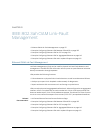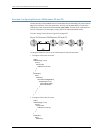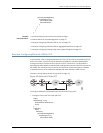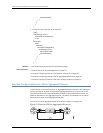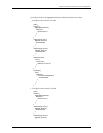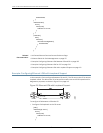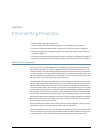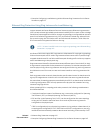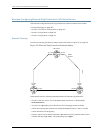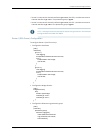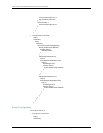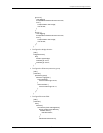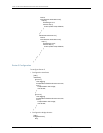
CHAPTER 13
Ethernet Ring Protection
•
Ethernet Ring Protection on page 145
•
Ethernet Ring Protection Using Ring Instances for Load Balancing on page 147
•
Example: Configuring Ethernet Ring Protection for MX Series Routers on page 148
•
Example: Configuring Load Balancing Within Ethernet Ring Protection for MX Series
Routers on page 154
•
Example: Viewing EthernetRing ProtectionStatus—Normal RingOperation onpage171
•
Example: Viewing Ethernet Ring Protection Status—Ring Failure Conditionon page 172
Ethernet Ring Protection
Link failure is often an unavoidable part of networking. However, there are methods of
improving the reliability of a router or bridge network even when link failures occur. For
example, SONET/SDH seal-healing ringsare frequently usedto adda level ofrobustness
to router networks. This ring protection switching is now extended to Ethernet links. You
can configure Ethernet ring protection for a series of two or more systems so that if one
link fails, traffic is rerouted around the failure on the ring.
The basic idea of Ethernet ring protection is to use one specific link to protect the whole
ring. This special link is the ring protection link (RPL). When all links are up and running,
the RPL blocks traffic and remains idle. The RPL itself is controlled by the designated
RPL owner node. There is only one RPL owner node on the ring and the RPL owner node
isresponsibleforblockingtheRPL interfaceunder normaloperatingconditions.However,
if a link failure occurs on the ring, the RPL owner node is responsible for unblocking the
RPL interface and protection–switching the traffic on the alternate path around the ring.
AnEthernet ringautomatic protectionswitching(R-APS)messagingprotocolcoordinates
the protection activities of all nodes on the ring. The APS blocks traffic over the failed
link and unblocks traffic over the RPL.
When the failed link is repaired, the traffic reverts to its normal pattern. That is, the RPL
owner blocks the RPL link and unblocks traffic over the cleared link.
Two or more nodes form a ring. Links between the nodes form a chain, with the last node
also connecting the first. Every ring node therefore has two ports related to the ring, one
in each direction. In this chapter, these directions are referred to as east and west.
145Copyright © 2010, Juniper Networks, Inc.



